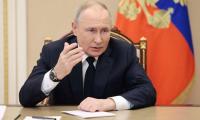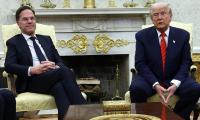On Dec 1 2018, Chinese President Xi Jinping and US President Donald Trump agreed to a 90-day trade truce at the G-20 Summit in Argentina in which tariff increase was put on hold. They have to reach a deal by March 1; otherwise the two countries may hit each other with tariffs again. Amidst small signs of progress, there is a presence of a visible new threat from the Trump administration that has heightened tensions.
The two strategic rivals imposed tit-for-tat tariffs on more than $300 billion worth of goods in 2018 before agreeing to the truce. The barrage of tariffs was imposed on goods including computers, car parts, circuit boards, furniture and agricultural produce. According to analysts, tariff war is merely a “tactic” or a “bargaining chip “to achieve certain policy objectives by [the] Trump administration”. Whether these objectives aim to bring supply chains back to America or eliminate America’s trade deficit; fuel anger at China’s ambitious mercantilism or arrest unfair trade practices, there are signs of an uncompromising attempt to tilt global commerce in the US’s favour.
If reducing trade deficit is the goal, then China has agreed to buy more of American rice and soya beans, suspend extra tariffs on auto imports and also indicated to modify an industrial policy that stokes suspicion abroad. This might cut the bilateral deficit with China to some extent but the US will find it hard to shrink its overall deficit given the pressure on the US and global markets amidst slowing growth, higher US Federal Reserve rates, and a dip in its manufacturing share of GDP and employment share globally.
The notion that firms under pressure from tariffs will force supply chains back to the US is a ‘pipe dream’ of the Trump administration according to ‘The Economist’. “Factory Asia” – the web of supply chains that is spread across the region, mostly centred around China, accounts for nearly half of global manufacturing. Therefore, other countries in Asia – both further up and below the value chain than China – are likely to benefit or step into the void left by China.
The wealthier countries are seeking some high end manufacturing they lost to China. Malaysia will try to lure back computer companies, and Taiwan wants to expand its foothold in electronics. Soaring wages in China will push the lowest skilled jobs to low income Asian countries so Vietnam in food processing, Cambodia in footwear and Bangladesh in clothing may take advantage. The shift in factories away from China in order to ‘reshore’ much of their manufacturing to America is an ‘illusion’ by experts, particularly because American companies may make high-end products but are less likely to engage in assembly and production of commodity components which are repetitive and low-paid jobs.
Tariffs are being used as a weapon to constrain China’s mercantilism and arrest its ambitious plan to move up the electronics value chain. America is concerned over unfair Chinese trade practices, including forced technology transfer, intellectual property theft and subsidies. As a consequence it has targeted Huawei, a pillar of the Chinese economy, now ready to offer fifth generation (5G) networks. It is strategically a key company for China’s global high-tech ambitions that recently overtook Apple as the second biggest seller of smart phones. America has accused it of 23 crimes including technology theft, spying, cyber intrusion and threat to national security. In this context, Canada’s justice department arrested Meng Wanzhou, Huwaei’s chief financial officer – at America’s request – for alleged violation of sanctions on selling technology to Iran.
To make matters worse, America is ramping pressure on its allies, particularly Europe, Huawei’s second biggest market, to ban or restrict the company. Some of its allies like New Zealand, Australia, Taiwan and Japan have blocked Huawei’s services over security concerns already. China sees this as a broader conspiracy to suppress its high-tech enterprises and has accused the US of “strong political motivations and political manoeuvrings,” whereas American officials insist that they are just enforcing the law.
This case has infuriated China and shaken Canada’s relations with the country. Focusing its ire on Canada, China has detained two influential Canadian citizens “suspected of engaging in activities that threatened China’s national security”, which will obviously fuel suspicion that China is retaliating against Canada’s arrest of Meng. A geopolitical tempest has gripped the technology industry, and its ramifications will unfold shortly. Whether Meng’s fate will be used as a bargaining chip to squeeze a few concessions from China or whether the US will put Huawei out of business by banning American firms such as Qualcomm and Intel from supplying it crucial components is yet to be seen.
On its side, while China has denied these accusations, it has pledged to strengthen necessary legislation targeting intellectual property theft in the country, empowering its Supreme Court to hear the cases.
The prospect of a trade truce looks shaky. The two countries have been given time till March 1 to agree on “structural changes” in China with respect to “forced technology transfer, intellectual property protection, non tariff barriers, cyber intrusions and cyber theft, services and agriculture.” If a trade deal is not reached, the US will slap tariffs on Chinese imports once again. This wave of protectionism will weigh on growth in China and on the wider Asia-Pacific region integrated within the supply chain including many American firms.
The writer holds an LLM degree ininternational economic law from the University of Warwick.
Email: beelam_ramzan@yahoo.com
People of that time believed that an eclipse was a symbol of displeasure of gods
Vertically speaking, dominance of domestic debt in Pakistan’s debt portfolio is haunting
Loss of biodiversity is stark reminder that urban mismanagement is not just infrastructural failure but ecological...
Strong public warning systems can also help ensure quick evacuations in places prone to fires
PPPs in Pakistan's WASH sector face significant regulatory and policy challenges that hinder their effectiveness
Instead, it would have powerful chairman with three-year term, appointed at prime minister’s discretion







